Expression Profiling of Flavonoid Biosynthesis Genes and Secondary Metabolites Accumulation in Populus under Drought Stress
- PMID: 34577017
- PMCID: PMC8467073
- DOI: 10.3390/molecules26185546
Expression Profiling of Flavonoid Biosynthesis Genes and Secondary Metabolites Accumulation in Populus under Drought Stress
Abstract
Flavonoids are key secondary metabolites that are biologically active and perform diverse functions in plants such as stress defense against abiotic and biotic stress. In addition to its importance, no comprehensive information has been available about the secondary metabolic response of Populus tree, especially the genes that encode key enzymes involved in flavonoid biosynthesis under drought stress. In this study, the quantitative real-time polymerase chain reaction (qRT-PCR) analysis revealed that the expression of flavonoid biosynthesis genes (PtPAL, Pt4-CL, PtCHS, PtFLS-1, PtF3H, PtDFR, and PtANS) gradually increased in the leaves of hybrid poplar (P. tremula × P. alba), corresponding to the drought stress duration. In addition, the activity and capacity of antioxidants have also increased, which is positively correlated with the increment of phenolic, flavonoid, anthocyanin, and carotenoid compounds under drought stress. As the drought stress prolonged, the level of reactive oxygen species such as hydrogen peroxide (H2O2) and singlet oxygen (O2-) too increased. The concentration of phytohormone salicylic acid (SA) also increased significantly in the stressed poplar leaves. Our research concluded that drought stress significantly induced the expression of flavonoid biosynthesis genes in hybrid poplar plants and enhanced the accumulation of phenolic and flavonoid compounds with resilient antioxidant activity.
Keywords: Populus; drought stress; flavonoid biosynthesis pathway; gene expression; secondary metabolites.
Conflict of interest statement
All authors declare that there is no conflict of interest.
Figures


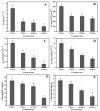
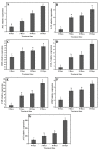
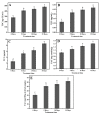
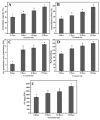
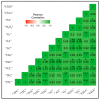
Similar articles
-
Integrated Analysis of Transcriptome and Metabolome Provides Insights into Flavonoid Biosynthesis of Blueberry Leaves in Response to Drought Stress.Int J Mol Sci. 2024 Oct 17;25(20):11135. doi: 10.3390/ijms252011135. Int J Mol Sci. 2024. PMID: 39456917 Free PMC article.
-
The melatonin synthase-encoding gene ASMT mediates poplar resistance to drought stress and fungi Dothiorella gregaria.Gene. 2025 Feb 10;937:149154. doi: 10.1016/j.gene.2024.149154. Epub 2024 Dec 6. Gene. 2025. PMID: 39647802
-
PagPXYs improve drought tolerance by regulating reactive oxygen species homeostasis in the cambium of Populus alba × P. glandulosa.Plant Sci. 2024 Jul;344:112106. doi: 10.1016/j.plantsci.2024.112106. Epub 2024 Apr 23. Plant Sci. 2024. PMID: 38663480
-
Accumulation characteristics of plant flavonoids and effects of cultivation measures on their biosynthesis: A review.Plant Physiol Biochem. 2024 Oct;215:108960. doi: 10.1016/j.plaphy.2024.108960. Epub 2024 Jul 23. Plant Physiol Biochem. 2024. PMID: 39079230 Review.
-
Chromatin modifications and memory in regulation of stress-related polyphenols: finding new ways to control flavonoid biosynthesis.Crit Rev Biotechnol. 2024 Dec;44(8):1478-1494. doi: 10.1080/07388551.2024.2336529. Epub 2024 May 2. Crit Rev Biotechnol. 2024. PMID: 38697923 Review.
Cited by
-
Spatiotemporal metabolic responses to water deficit stress in distinct leaf cell-types of poplar.Front Plant Sci. 2024 Mar 1;15:1346853. doi: 10.3389/fpls.2024.1346853. eCollection 2024. Front Plant Sci. 2024. PMID: 38495374 Free PMC article.
-
The Role of Polyphenols in Abiotic Stress Tolerance and Their Antioxidant Properties to Scavenge Reactive Oxygen Species and Free Radicals.Antioxidants (Basel). 2025 Jan 10;14(1):74. doi: 10.3390/antiox14010074. Antioxidants (Basel). 2025. PMID: 39857408 Free PMC article. Review.
-
Medicinal plants in a changing climate: understanding the links between environmental stress and secondary metabolite synthesis.Front Plant Sci. 2025 Jun 13;16:1587337. doi: 10.3389/fpls.2025.1587337. eCollection 2025. Front Plant Sci. 2025. PMID: 40584865 Free PMC article. Review.
-
Drought stress modifies the community structure of root-associated microbes that improve Atractylodes lancea growth and medicinal compound accumulation.Front Plant Sci. 2022 Dec 2;13:1032480. doi: 10.3389/fpls.2022.1032480. eCollection 2022. Front Plant Sci. 2022. PMID: 36531372 Free PMC article.
-
Multi-omics analysis reveals genetic architecture and local adaptation of coumarins metabolites in Populus.BMC Plant Biol. 2024 Dec 6;24(1):1170. doi: 10.1186/s12870-024-05894-9. BMC Plant Biol. 2024. PMID: 39643871 Free PMC article.
References
-
- Shafroth P.B., Stromberg J.C., Patten D.T. Woody riparian vegetation response to different alluvial water table regimes. West. N. Am. Nat. 2000;60:66–76.
-
- Li C., Wang K. Differences in drought responses of three contrasting Eucalyptus microtheca F. Muell. populations. For. Ecol. Manag. 2003;179:377–385. doi: 10.1016/S0378-1127(02)00552-2. - DOI
-
- Yin C., Wang X., Duana B., Luob J., Li C. Early growth, dry matter allocation and water use efficiency of two sympatric Populus species as affected by water stress. Environ. Exp. Bot. 2005;53:315–322. doi: 10.1016/j.envexpbot.2004.04.007. - DOI
-
- Zhang X., Wu N., Li C. Physiological and growth responses of Populus davidiana ecotypes to different soil water contents. J. Arid Environ. 2005;60:567–579. doi: 10.1016/j.jaridenv.2004.07.008. - DOI
MeSH terms
Substances
Grants and funding
LinkOut - more resources
Full Text Sources
Other Literature Sources
Medical
Research Materials
Miscellaneous

